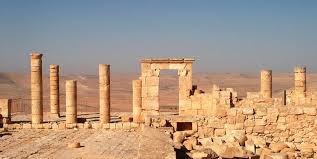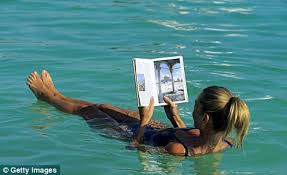An interesting Fauna cover from Estonia, depicting 3 single sets issued in different years with some Fauna from the Tallin Zoo. From the left to the right we can see the following animals: Long-tailed Goral (issued in 2000), Amur tiger (issued in 1998) and Snow leopard (issued in 1999).
Friday 28 April 2017
ESTONIA
Another Fauna cover from Estonia, depicting a miniature sheet issued in 2005 on topic "Nature" (Swans).
ESTONIA
A nice Fauna cover from Estonia, depicting a joint issue with Kazakhstan issued in 2005 on topic "Estonian hunting dogs".
ISRAEL
Another Fauna cover from Israel, depicting a complete set issued in 2001 on topic "Wild animals". From the left to the right we can see the following animals: Roe deer, Greek tortoise, Lesser kestral and Kuhl's Pipistrelle.
Wednesday 26 April 2017
ISRAEL
A very nice Fauna cover from Israel, depicting a miniature sheet issued in 1987 on topic "Biblical Birds". Four different species of owls are represented in this beautiful set: the Barn owl, the Hume's tawny owl, the Bruce's scops owl and the Eagle owl.
ISRAEL
A very nice Fauna cover from Israel, depicting a complete set issued in 1987 on topic "Biblical Birds". Four different species of owls are represented in this beautiful set: the Barn owl, the Hume's tawny owl, the Bruce's scops owl and the Eagle owl.
BELGIUM
A nice cover from Belgium, depicting a complete set issued in 1974 on topic "Flora and Fauna". A nice stamp with the "European Badger" and another one with a insect called "Golden Ground Beetle" are represented in this set, as well as 2 Flora stamps.
Monday 24 April 2017
ISRAEL
Another nice UNESCO cover from Israel, depicting a complete set issued in 2007 with three sites inscribed as Unesco's universal heritage: White city of Tel Aviv, Akko (Acre) and Masada:
White city of Tel Aviv - The Modern Mouvement
Tel Aviv was founded in 1909 and developed as a metropolitan city under the British Mandate in Palestine. The White City was constructed from the early 1930s until the 1950s, based on the urban plan by Sir Patrick Geddes, reflecting modern organic planning principles. The buildings were designed by architects who were trained in Europe where they practised their profession before immigrating. They created an outstanding architectural ensemble of the Modern Movement in a new cultural context. The site is inscribed as Unesco's world heritage since 2003.


Old city of Acre
Acre is a historic walled port-city with continuous settlement from the Phoenician period. The presente city is charactristic of a fortified town dating from the Ottoman 18th and 19th centuries, with typical urban componentes such as the citadel, mosques, khans and baths. The remains of the Crusader town, dating from 1104 to 1291, lie almost intact, both above and below today's street level, providing an exceptional picture of the layout and structures of the capital of the medieval Crusader kingdom of Jerusalém. The site is inscribed as Unesco's world heritage since 2001.


Masada
Masa is a rugged natural fortress, of majestic beauty, in the Judaean Desert overlooking the Dead Sea. It is a symbol of the ancient kingdom of Israel, its violent destruction and the last stand of Jewish patriots in the face of the Roman army, in 73 A.D. It was built as a palece complex, in the classic style of the early Roman Empire, by Herod the Great, King of Judaea (reigned 37 - 4 B.C.). The camps, fortifications and attack ramp that encircle the monumento constitute de most complete Roman siege works surviving to the present day. Inscribed as Unesco's world heritage since 2001.


White city of Tel Aviv - The Modern Mouvement
Tel Aviv was founded in 1909 and developed as a metropolitan city under the British Mandate in Palestine. The White City was constructed from the early 1930s until the 1950s, based on the urban plan by Sir Patrick Geddes, reflecting modern organic planning principles. The buildings were designed by architects who were trained in Europe where they practised their profession before immigrating. They created an outstanding architectural ensemble of the Modern Movement in a new cultural context. The site is inscribed as Unesco's world heritage since 2003.
Old city of Acre
Acre is a historic walled port-city with continuous settlement from the Phoenician period. The presente city is charactristic of a fortified town dating from the Ottoman 18th and 19th centuries, with typical urban componentes such as the citadel, mosques, khans and baths. The remains of the Crusader town, dating from 1104 to 1291, lie almost intact, both above and below today's street level, providing an exceptional picture of the layout and structures of the capital of the medieval Crusader kingdom of Jerusalém. The site is inscribed as Unesco's world heritage since 2001.
Masada
Masa is a rugged natural fortress, of majestic beauty, in the Judaean Desert overlooking the Dead Sea. It is a symbol of the ancient kingdom of Israel, its violent destruction and the last stand of Jewish patriots in the face of the Roman army, in 73 A.D. It was built as a palece complex, in the classic style of the early Roman Empire, by Herod the Great, King of Judaea (reigned 37 - 4 B.C.). The camps, fortifications and attack ramp that encircle the monumento constitute de most complete Roman siege works surviving to the present day. Inscribed as Unesco's world heritage since 2001.
ISRAEL
A very nice UNESCO cover from Israel, depicting a complete set issued in 2008 with 2 sites inscribed at UNESCO as an outstanding universal value: the Biblical Tels and the Incense route.
Biblical Tels of Meggido, Hazor and Beer Sheba
Tels (prehistoric settlement mounds) are characteristic of the flatter lands of the eastern Mediterranean, particularly Lebanon, Syria and eastern Turkey. Of more than 200 tels in Israel, Meggido, Hazor and Beer Sheba are representative of those that contain substantial remains of cities with biblical connections. Their traces of construction over the millennia reflect the existence of centralized authority, prosperous agricultural activity and the control of importante trade routes. The site is inscribed at Unesco world heritage since 2005.


Incense Route - Desert Cities in the Negev
The four Nabatean towns of Haluza, Mamshit, Avdat and Shitva, along with associated fortresses and agricultural landscapes in the Negev desert, are spread along routes linking them to the Mediterranean end of the incense and spice route. Together they reflect the hugely profitable trade in frankincense and myrrh from south Arabia to the Mediterranean, which flourished from the 3rd century BC until the 2nd century AD. With the vestiges of their sophisticated irrigation systems, urban constructions, forts and caravancerai, they bear witness to the way in which the harsh desert was settled for trade and agriculture. This site is inscribed as UNESCO world heritage since 2005.

Biblical Tels of Meggido, Hazor and Beer Sheba
Tels (prehistoric settlement mounds) are characteristic of the flatter lands of the eastern Mediterranean, particularly Lebanon, Syria and eastern Turkey. Of more than 200 tels in Israel, Meggido, Hazor and Beer Sheba are representative of those that contain substantial remains of cities with biblical connections. Their traces of construction over the millennia reflect the existence of centralized authority, prosperous agricultural activity and the control of importante trade routes. The site is inscribed at Unesco world heritage since 2005.
Incense Route - Desert Cities in the Negev
The four Nabatean towns of Haluza, Mamshit, Avdat and Shitva, along with associated fortresses and agricultural landscapes in the Negev desert, are spread along routes linking them to the Mediterranean end of the incense and spice route. Together they reflect the hugely profitable trade in frankincense and myrrh from south Arabia to the Mediterranean, which flourished from the 3rd century BC until the 2nd century AD. With the vestiges of their sophisticated irrigation systems, urban constructions, forts and caravancerai, they bear witness to the way in which the harsh desert was settled for trade and agriculture. This site is inscribed as UNESCO world heritage since 2005.
ISRAEL
An interesting cover from Israel, depicting a single stamp issued in 2009 on topic "The Dead Sea, the lowest place on Earth".
The Dead Sea is a salt lake bordered by Jordan to the east and Israel and Palestine to the west. It is 9,6 times as salty as the ocean and one of the world's saltiest bodies of water. The Dead Sea water as adensity of 1,24 kg/litre, whcih make swimming similar to floating.

The Dead Sea is a salt lake bordered by Jordan to the east and Israel and Palestine to the west. It is 9,6 times as salty as the ocean and one of the world's saltiest bodies of water. The Dead Sea water as adensity of 1,24 kg/litre, whcih make swimming similar to floating.
Subscribe to:
Posts (Atom)










